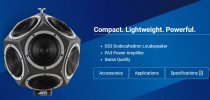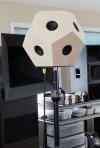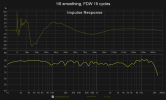Transparence IMO is not a thing that can be easily felt. From my experience if some speaker sounds "transparent", it's not correct, with some exaggerations of presence/mid-highs or lack of lows.This confused me because I happen to use Eclipse single driver speakers, which I like a lot and I indeed think they sound really transparent like they claim, and their whole philosophy is basically designing for good impulse response
But really good fullrange speaker can sound correct until it's overdriven. For example, Fostex NF1 speakers with parabolic hyperboloid woofer like FW168HP-X sounded very nice.
For exampleHas any company tried to make an active single driver speaker, that utilizes EQ to somewhat fix its issues etc?
But these speakers are usually limited with SPL, LF extension and of course they are beaming. So, it's a nearfield monitoring by definition.






